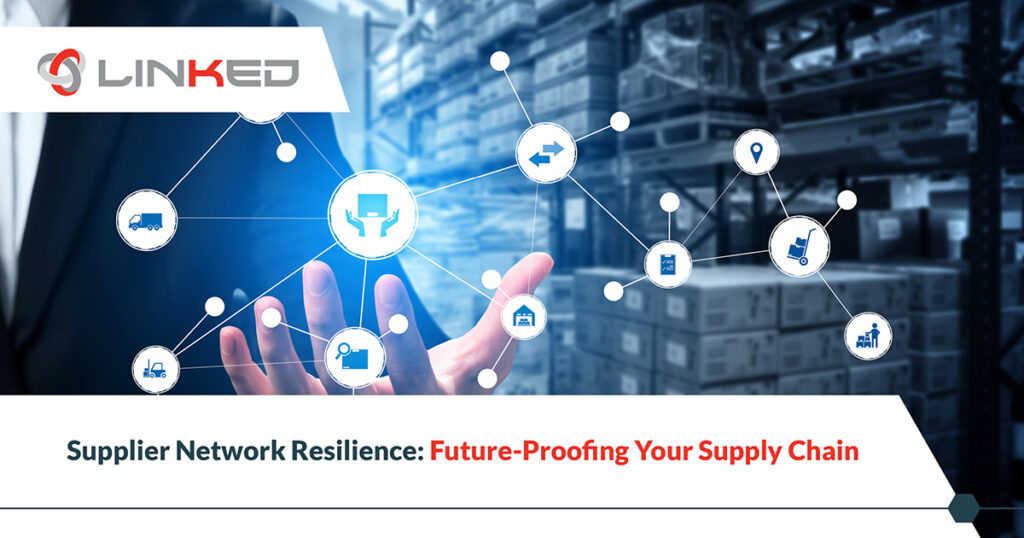In today’s fast-paced, interconnected global landscape, businesses are more vulnerable than ever. Political shifts, economic fluctuations, and unforeseen events have underscored the need for a robust supply chain. A single disruption, whether due to geopolitical tensions, sudden raw material shortages, or natural disasters, can have cascading effects. Yet, amidst this backdrop of uncertainty, the resilience of the supply chain emerges as the lynchpin of business continuity.
Understanding Supply Chain Vulnerabilities: Beyond The Surface
Every disruption, no matter its origin, presents distinct challenges and uncertainties. While many businesses have an awareness of their immediate or Tier 1 suppliers, few have a comprehensive understanding of the intricate web that constitutes their supply chain. Tools like supply chain mapping come into play here, enabling businesses to delve deep into their supplier network, right down to the grassroots.
An effective supply chain map is more than just a visual representation. It encompasses supplier distribution patterns, warehousing locations, manufacturing facilities, and even the sources of raw materials used by your suppliers. Such granular insights can illuminate potential chokepoints and vulnerabilities, helping businesses prepare for multiple scenarios.
The Resilience Triangle: A Framework For Adaptive Solutions
The resilience triangle provides an invaluable lens through which businesses can view their supply chain’s robustness. It breaks resilience into two key components: resistance capacity and recovery capacity. Resistance typifies how well a supply chain can fend off or reduce the impact of a disruption. In stark contrast, recovery delineates its ability to regroup and bounce back following a setback.
Incorporating this framework into risk assessment and mitigation strategies can be transformative. For instance, if a business’s resistance capacity is robust due to diverse supplier relationships, its recovery capacity might involve lean supply chain practices to swiftly pivot in response to changes.
Proactive Risk Mitigation and Real-time Monitoring
Risk mitigation is an ongoing endeavour, not a one-off exercise. The landscape of threats is continually evolving, which makes continuous monitoring crucial. For instance, while political tensions in one region might be a risk today, tomorrow’s challenge might be a sudden technological disruption. Hence, businesses must have an “early warning signal” mechanism, enabling them to foresee threats and activate contingency plans before competitors.
However, vigilance doesn’t end once the crisis has passed. Conducting a post-mortem analysis, businesses can take stock of how their supply chain fared during the disruption. This reflection can unearth invaluable insights into the efficacy of supplier risk management, areas in need of further redundancy, and strategies that ensure customer satisfaction even during challenging times.
Investing in Resilient Supply Chain Practices: The Foundations
- Deepening Supplier Relationships:
In the business world, relationships are everything. Fostered over time, they can be a company’s bulwark during tumultuous times. Strong relationships with suppliers not only provide flexibility during crises but also open doors for collaboration, leading to innovative solutions that benefit both parties. - Accurate Demand Forecasting:
The supply chain and demand are inextricably linked. A clear understanding of this nexus ensures businesses can proactively adjust their production schedules, optimise inventory management, and ensure customer satisfaction. With accurate demand forecasting, businesses are better placed to respond to supply chain challenges, whether they arise from raw material shortages or external geopolitical factors. - Geographically Diverse Manufacturing and Warehousing:
Putting all your eggs in one basket is risky. By partnering with third-party logistics (3PL) providers and ensuring geographically diverse manufacturing sites, businesses can distribute their risk. If one region is compromised due to unforeseen challenges, other sites can seamlessly take over, ensuring a consistent supply chain flow. - Empowering Customer Service with Transparency:
Trust is the cornerstone of brand loyalty. By maintaining open, honest, and consistent communication with customers during challenging times, businesses can reinforce this trust. A prepared customer service team, equipped with accurate information, can address concerns, manage expectations, and ensure that the brand’s reputation remains untarnished. - Harnessing Technology for Adaptive Supply Chain Management:
In today’s digital age, technology is the game-changer. ERP and cloud solutions, such as those provided by Linked in partnership with NetSuite, offer real-time insights, unparalleled flexibility, and agility. These solutions empower businesses to navigate disruptions with confidence, ensuring they remain at the forefront of their industry.
Embracing Future-Proofing: A Business Imperative
While building a resilient supply chain undoubtedly requires both human and capital resources, the dividends it pays in the long run are invaluable. A well-prepared business can weather any storm, ensuring continuity, customer satisfaction, and a strong bottom line.
In this era, marked by complex global supply chains and ever-evolving challenges, the question isn’t whether you should invest in building a resilient supply chain but how soon you can start.
Are you poised to enhance your supply chain resilience, tackle global supply chain challenges head-on, and integrate adaptive solutions? Reach out to Linked for state-of-the-art ERP and cloud solutions. Together, let’s ensure that your supply chain is not just resilient but future-proof. Step into the future confidently with Linked.

